In National Geographic’s Queens, Females Finally Get Their Say
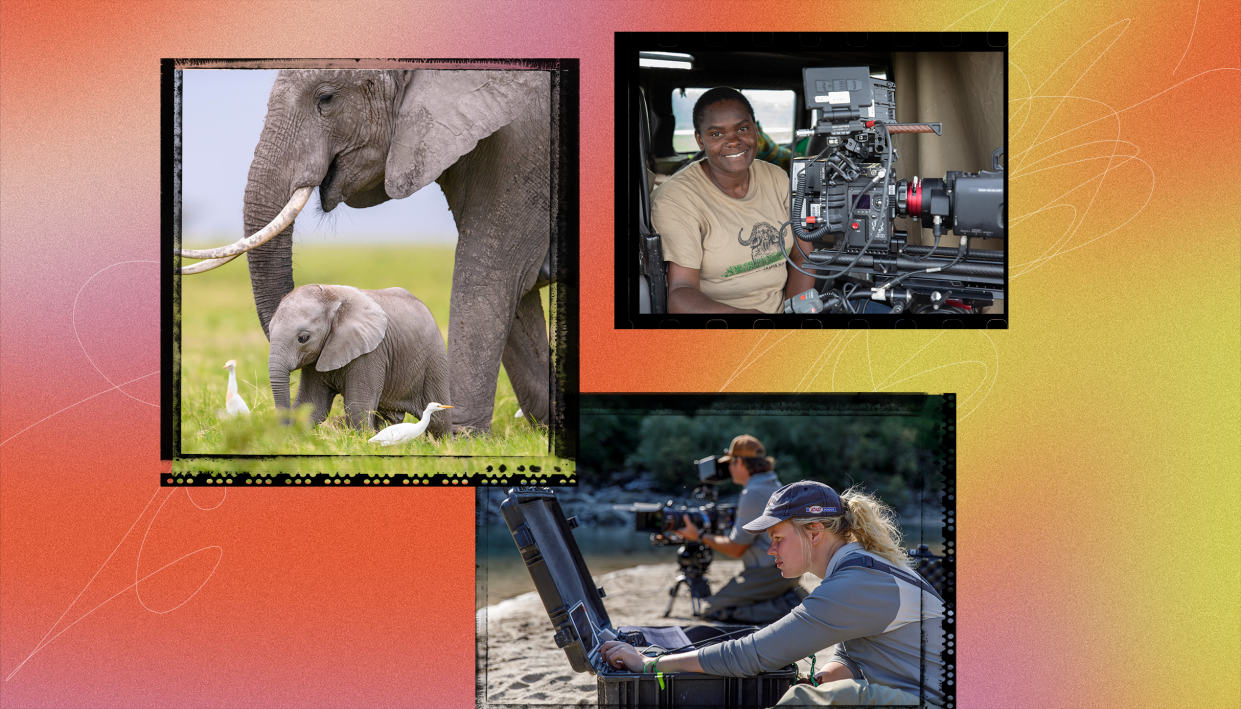
National Geographic
It’s a damp and rainy morning in Tanzania’s Ngorongoro Crater—the largest unbroken caldera in the world—when our safari guide stops our vehicle in front of a dozen elephants. It is in this quiet moment of observation that Vanessa Berlowitz, the executive producer of National Geographic's new wildlife series, Queens, casually mentions the kind of random fact you know you’ll never forget.
“Wrinkles on an elephant help them stay cool because their wrinkles retain 10 times more water than smooth skin,” she says.
That’s my headline, I decide: “Elephants Reveal the Best Reason to Embrace Your Wrinkles.”
And yet, little did I know that coming up with a headline—and a particular focus for this piece—was going to take weeks to figure out. As much as I’d love to write about how elephants can redefine our views on aging, or where to stay in Tanzania for the most epic experience of your life, the truth is that the most important story here is the one I had no idea needed to be told.
Queens is the seven-part series (premiering on National Geographic on March 4, and all episodes on Disney+ and Hulu come March 5) narrated by Angela Bassett that focuses on how females in species such as elephants, hyenas, lions, and more, rise to power and survive in a rapidly changing world. It’s raw, it’s powerful, and it’s mesmerizing.
But the bigger story—and the one that will make episode seven all the more impactful for the viewers at home—is how Queens came to be in the first place.
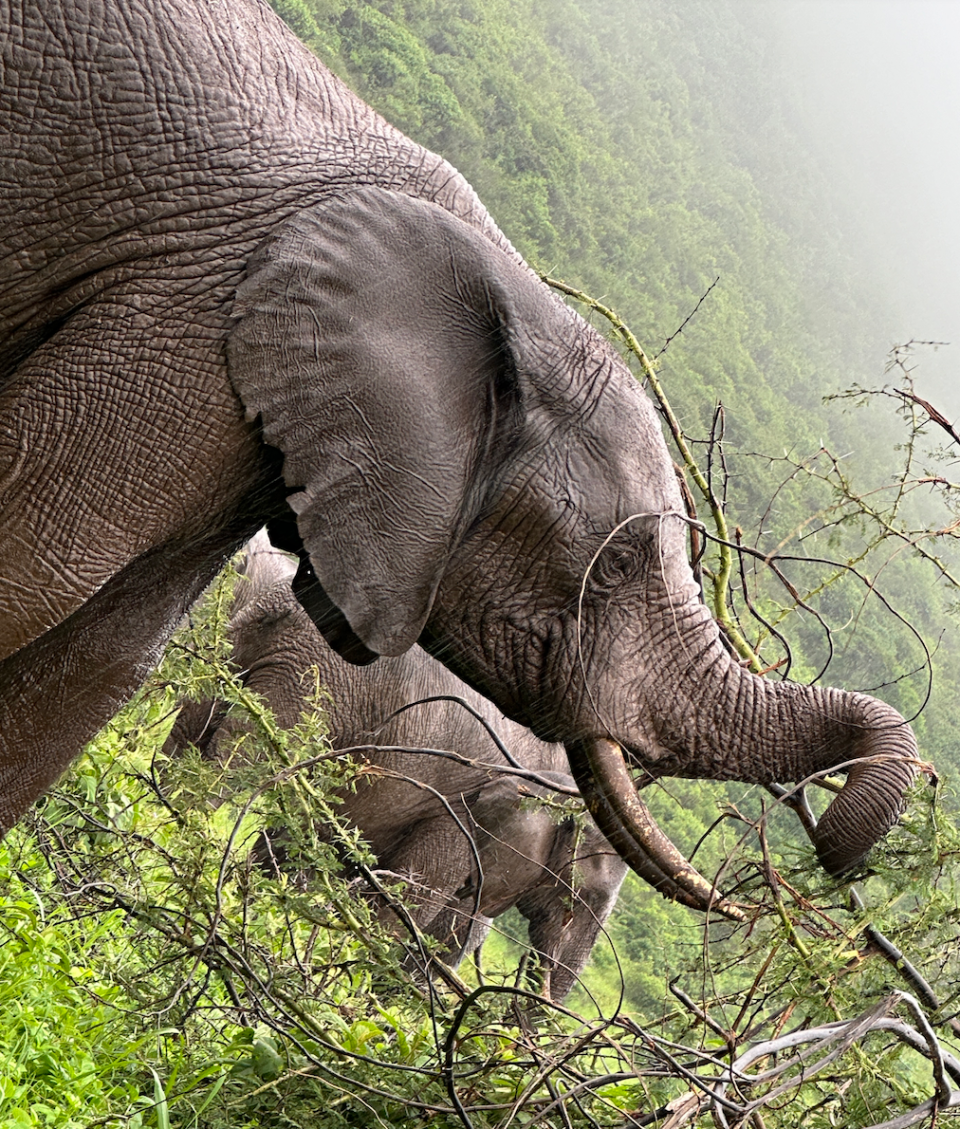
elephant-wrinkles-elephants-ngorongoro-crater-2023.png
Much as with that surprising elephant fact, I was stunned to learn that most wildlife production you watch on TV is actually developed, edited, and based in Bristol, England. These series are very rarely made by the locals who share this sacred land with the species who inhabit it. You also won’t find a lot of women making the creative decisions, or being out in the field or up in a tree shooting footage. The top executives and producers behind some of your favorite wildlife programs look pretty much like America’s history with its presidents. You know what I’m saying.
But all that is starting to change. Back in 2019, during a casual brainstorm between Berlowitz and National Geographic’s senior vice president of development and production Janet Han Vissering, a light bulb went on.
What if they could make a series about the most impressive matriarchs in the animal kingdom—which surprisingly, had never been much of a focus—and produce it with an all-female crew?
Brilliant, yes. Possible? Not really.
“Historically, premium wildlife has been made by men,” Berlowitz tells Glamour. “And I am one of the very few women that has managed to kind of get through the ranks to be in a position where I could pitch and sell a show like Queens. But when I looked at who was in my wake, there weren't a whole load of women with the level of experience needed for a production like this.”
“And so we made a decision,” Han Vissering says.
If an all-female crew wasn’t possible, then at least a female-led one was. Han Vissering also declared they would “make a very, very big effort to bring in new filmmakers and new talent into this natural history field.”
“We knew we had to use this opportunity to raise female natural history contributors across the board,” she says.
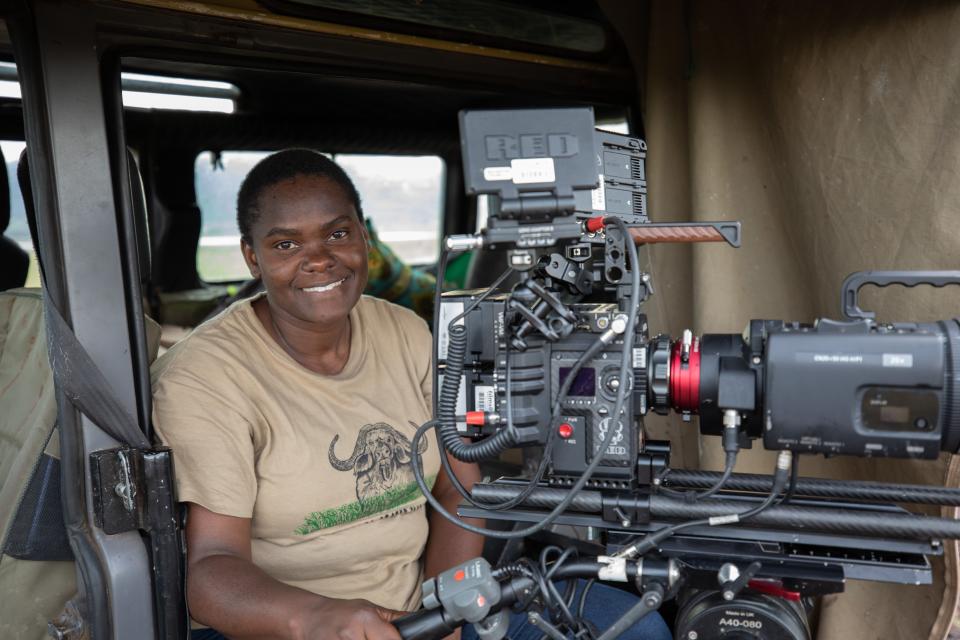
queens-erica-rugabandana.jpg
It certainly hadn’t been for a lack of interest. One of the main reasons women haven’t been able to sustain a job in wildlife production is due to an issue we’ve been fighting here in the States for decades: paid leave.
“There are seriously talented women who usually drop out once they are trying to have kids or because they have caretaking situations,” Berlowitz says. “Even Chloë Sarosh, our showrunner, is a young mother. But we said, ‘To hell with it—we’re going to make this work.’”
What that meant was providing a support system unlike anything a show of this caliber had ever seen. Six babies were born during the four years Queens was in production.
“We’d be like, ‘Okay, you hold the baby, I’ll take the shoot.’ It felt at times a bit like a commune and babies were being brought into the office and people were just picking up the slack, but it worked,” Berlowitz says.
Queens producer Faith Musembi notes that “it’s always been the guys who can leave their families behind to go out into the wild, and spend months there.”
“That’s been the tradition, and it’s something that lots of guys have loved doing,” she tells Glamour. “You’re going off on an adventure. But in doing it that way, you also end up seeing things from a male gaze, because they’re drawing from their own experiences and perspectives. So breaking away from that tradition is part of what the Queens ethos is about and trying to challenge the industry, because women will continue having children, or that should be an option if someone wants to have children. So, how do we make that work?”
For one, new mothers on Queens got paid maternity leave, and when they came back, they could decide to continue full-time or explore a part-time scenario that better fit their needs. “It was a risk that very few of my bosses in the past would ever have taken,” Berlowitz admits. “And I think it was just that we had to take the risk. There wasn’t the option [of this plan not working]. Once we committed to being female-led, we just had to get on and do it.”
Berlowitz did that by reaching out to Sophie Darlington and Justine Evans, two of the most well-regarded directors of photography in the medium. They not only came on board but adapted the ethos set forth by National Geographic and Berlowitz’s Wildstar Films that they would all effectively find and train the next generation of themselves.
Whether it was blind advertisements or working with Nature, Environment and Wildlife Filmmakers (NEWF) in South Africa to recruit and train women and those from underrepresented groups, the plan was set in motion.
And for Musembi, a local Kenyan producer and director, it effectively changed everything.
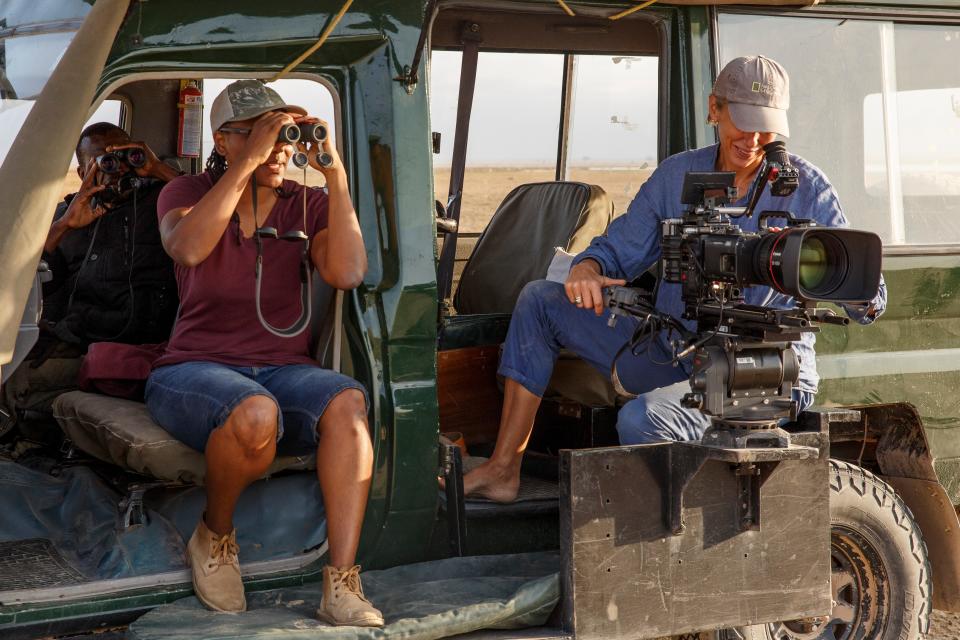
queens-faith-sophie-behind-the-scenes.jpg
“Just before Queens came across my path, it was probably the lowest point of my life,” Musembi tells Glamour while on location on a new wildlife series in Africa. “I was 34 at the time and thinking, How do I keep doing what I've been doing when there are no jobs for Kenyans in Kenya in natural history?”
After a series of devastating setbacks out of Musembi’s control, she applied for and got a coveted scholarship with Jackson Wild. From there she was connected to the team from Queens.
“They were actually going out of their way to find people like me. And I was ready,” she says. Still, it took quite some time—and several rounds of interviews—before Musembi was hired. “I knew if it happened, I’d be working with all these amazing producers—like a Sophie Darlington—who have done these amazing projects. I had sleepless nights thinking, Oh, my God, is this really happening? And then telling myself, Don’t get excited. Don’t get excited.”
But when the official call came, Musembi was more than ready. And when the project was completed four years later, it was obvious to everyone at Wildstar Films and National Geographic that Musembi—and other female locals they worked with in the field—were the secret weapons to elevating the project in a way that simply couldn’t have been anticipated.
“One of the episodes was filmed in Amboseli, which is a national park in Kenya. And my mom grew up so close to there,” Musembi says. “So the fact that I was able to work in the area, and the researchers we worked with actually went to school with my mom’s sisters, which was just incredible.”
And then there was this: “Faith also speaks Swahili,” Sarosh told reporters at the Television Critics Association winter press tour. “So she spoke Swahili to the elephant researchers. They liked her 100 times more than anyone. The access we got because Faith was there provided so much more value.”
Berlowitz agrees. “That’s what happens when you bring in a new voice to this genre. You get different stories and better stories. And Faith is a perfect example of that.”
Musembi so impressed the higher-ups that they gave her the first directing opportunity of her career, with a previously unplanned seventh episode commissioned by NatGeo. Titled “Behind the Queens,” the episode shows how the series was made and introduces the filmmakers whose lives were changed because of it.
While the entire series is highly worth your time, episode seven is the kind of television that speaks to the power of change and taking big swings.
“Someone in our industry said, ‘Oh, Queens, that series the girls are making,’” Sarosh said at the TCAs. “Vanessa and I knew at that moment that not only did we have to make a great series, we had to make something that was better. And to sit here four years later with all these amazing women and go, ‘Well, just look at the series those girls made,’ feels really good and really important.”
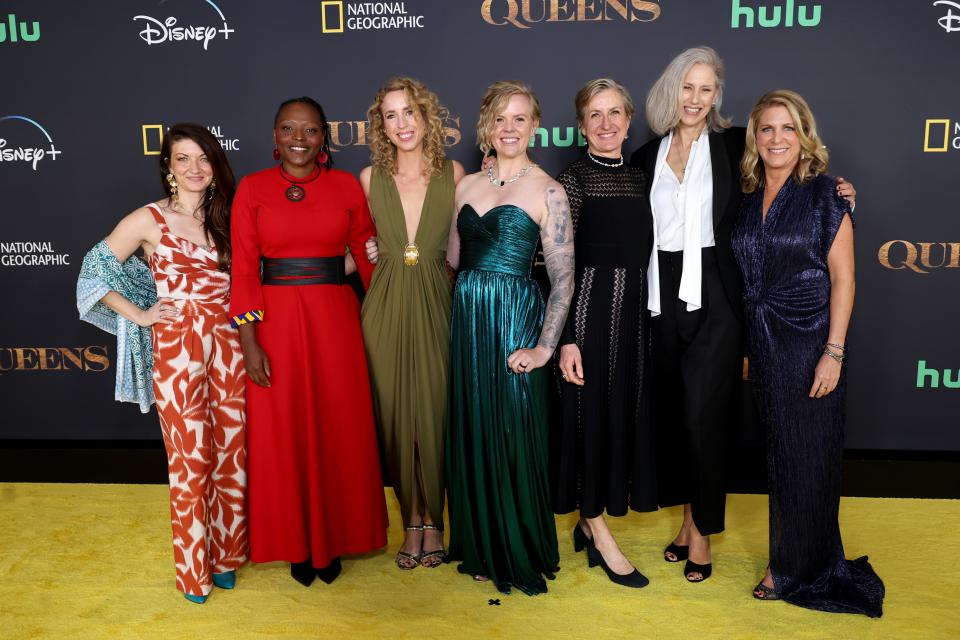
Queens-Los Angeles Premiere Of National Geographic Documentary Series "Queens" - Red Carpet
Even so, Berlowitz wants to make one thing clear: While the female-led crew did have its detractors, many of their male colleagues and competitors were and are extremely supportive.
“I have to shout out the men who also believed in diversifying,” she says. “We had to hire men in certain roles because there simply weren’t women who’d had an opportunity or exposure with the technology, for example. But they would commit to the ethos of the series, which is if you work on it, you need to pass on your skills. They would always help with training an assistant camera woman on the team. It felt so different from anything I’ve ever worked on before.”
While National Geographic has yet to order a second season of Queens, Berlowitz says she’s already noticing a change ahead of the series debut.
“National Geographic allowed us to pay for these women who weren’t necessarily able to immediately contribute footage to the show, but to come on the shoots and be trained and then contribute,” she says. "My husband and I [who co-founded Wildstar Films] then set up the Wildstar Academy on that model, and we are now financing women from across the world to go on shoots across all our shows.”
Equally as exciting is that Wildstar is also now nearly 70% female. “It’s become a place where women feel safe and protected and will get opportunities,” Berlowitz says. “And generally, I think it’s become part of the discussion in Bristol, which is very much a hub for wildlife [production development].”
So what is the official word from National Geographic president Courteney Monroe about continuing Queens? “It will inspire and foster the change that we’re talking about, [so] I would be very open to a second season,” she says.
Plus, as NatGeo’s Han Vissering notes, “We worked with women who had never done a single thing in the natural history world, [and others] who were also not sure if their career was going to continue. We made room and we got a better show for it.”
Queens premieres on National Geographic with the first three episodes on Monday, March 4, 2024, followed by the remaining four episodes on March 11. All episodes will stream on Disney+ and Hulu on Tuesday, March 5, 2024.
Jessica Radloff is the Glamour senior West Coast editor and author of the NYT best-selling book The Big Bang Theory: The Definitive, Inside Story of the Epic Hit Series.
Originally Appeared on Glamour

